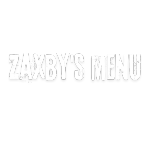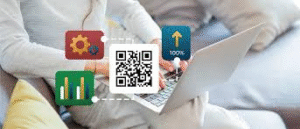Living is in a natural world where the world has a short attention span and where competition is rife, then it is not optional anymore to make it easy to access whatever content, services or brand information that one is reading, listening or seeing. QR code is one of the easiest tools in the possession of a small business owner, marketer, educator, or content creator. It is quick, effective and hardly has any form of technological knowledge needed to operate. What is even more important you can start by making your free QR code using only a few steps.
What Makes QR Codes So Valuable?
QR codes have become a rather silent tool of uniting offline and online environment. Consider them as short term digital connector. A QR code may open a web page, show an information message, point to a file, take a person to your social media, or even add a contact to a phone after pressing it only once.
They work, this is why you see them everywhere. Whether it is the restaurant menu and product packaging, event invitation cards, and business cards, QR codes provide a convenient method of conveying useful information without touching surfaces.
The most amazing thing is that it was not necessary. As you can see, you can use the same power and create your free QR with no more than your browser and a couple of minutes of your time.
How to Create a QR Code Without Any Technical Skills
The concept of creating a QR code may sound like something best left to developers or graphic designers who are tech-savvy. Yet, it turns out to be a very simple task. Even a basic user can design and download a professional-looking QR code in minutes and you can also create logos to bolster your brand using tools like Adobe Express and other browser-based generators. No software needs to be installed, and there’s no steep learning curve, everything can be done easily from your mobile phone or computer.
You don’t need to install any software, and there’s no steep learning curve. Everything works right from your mobile device or computer.
Here’s a simple step-by-step process:
- Open a browser on your phone or computer.
- Visit a free QR code generator (like Adobe Express QR tool).
- Paste the URL or text you want your QR code to point to.
- Customize the style — pick colors, shape, and layout.
- Download the finished QR code image.
That’s it. No signup, no software, no stress.
Customization That Reflects Your Identity
After creating your QR code, the second question ought to be: where do I place it? It all depends on what you want to do but in this case the world is open to you.It can be placed in the printed media such as flyers, posters, brochures, and business cards. It may be put on such digital assets as emails, presentations, and landing pages. During some instances, people also include it in the packaging of the product, signs, or stickers.
The trick is to consider where would your readers respond to it best. In case you do a workshop, place it in your slides or handouts. Print it on your coffee shop near the counter inviting participations of loyalty programs or offers. In the event that you are a freelancer, add it in your email signature or resume.
It is simply a matter of establishing instant direct access and you can do that by generating your free QR code and locating it at the appropriate context.
Where to Use Your QR Code for Maximum Impact
Once you’ve made your QR code, the next question is: where do you put it? The answer depends on your goal, but the options are wide open. You can include it on printed materials like flyers, posters, brochures, and business cards. You can place it on digital assets like emails, presentations, and landing pages. Some people even add it to product packaging, signage, or stickers.
The key is to think about where your audience is most likely to interact with it. If you’re running a workshop, add it to your slides or handouts. If you own a coffee shop, print it near the counter for loyalty signups or promotions. If you’re a freelancer, include it in your email signature or resume.
It’s all about creating quick, direct access —and you can do that by creating your free QR code and placing it in the right context.
Best Practices to Keep in Mind
Creating a QR code is simple, but there are still a few things to remember to ensure it works the way you want it to.
- Always test before sharing. Scan it yourself to confirm it works properly on multiple devices.
- Make sure the destination is mobile-friendly. Since most people will scan using a phone, the linked page should load quickly and be easy to use.
- Don’t shrink it too small. Your QR code should be visible and easy to scan.
- Use high-resolution images. This ensures it prints well if you’re using it in physical materials.
- Be consistent. If you’re using more than one code for different purposes, design them in a way that still reflects your visual identity.
By following these tips, you ensure your QR code does more than just look good — it functions effectively, too.
A Simple Tool With Big Potential
You don’t need a complicated app, a graphic design degree, or any technical background to start using QR codes today. All you need is a clear purpose and a few moments to create. The accessibility and usefulness of this tool make it a must-have in your communication toolkit.
And the journey begins by creating your free QR code — one small step that can lead to smarter engagement, wider reach, and more professional interactions.
Final Thought
In an age where digital access needs to be fast and seamless, QR codes offer one of the simplest solutions. You don’t need to be a tech expert or designer to take advantage of this powerful tool. With just a few clicks, you can connect your audience to your content, brand, or services — all by creating your free QR code. It’s efficient, customizable, and surprisingly easy. So whether you’re promoting your business, sharing a portfolio, or simplifying customer engagement, start now and let your QR code do the work for you.

